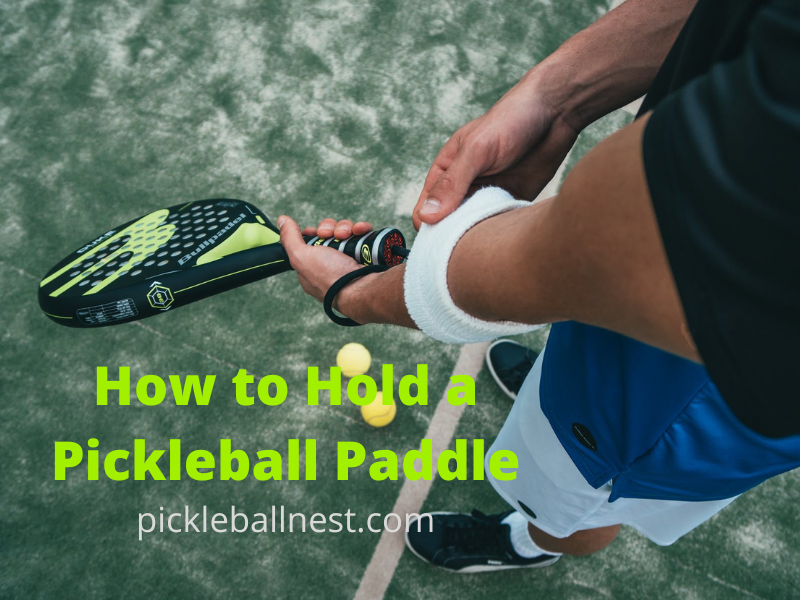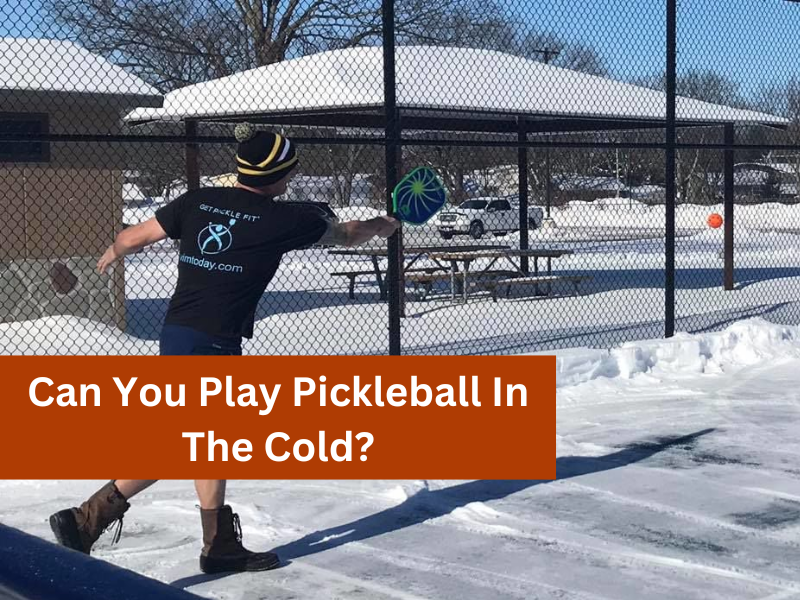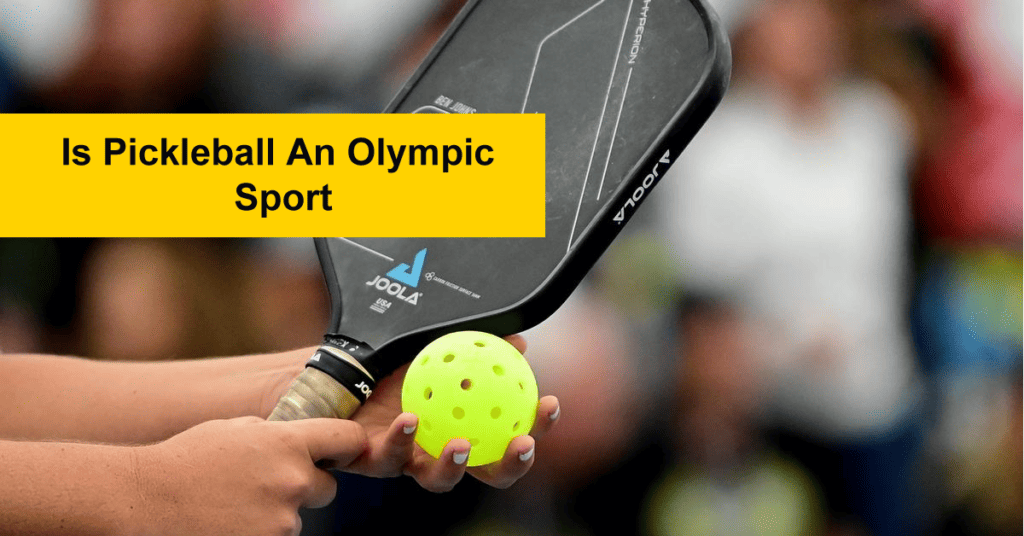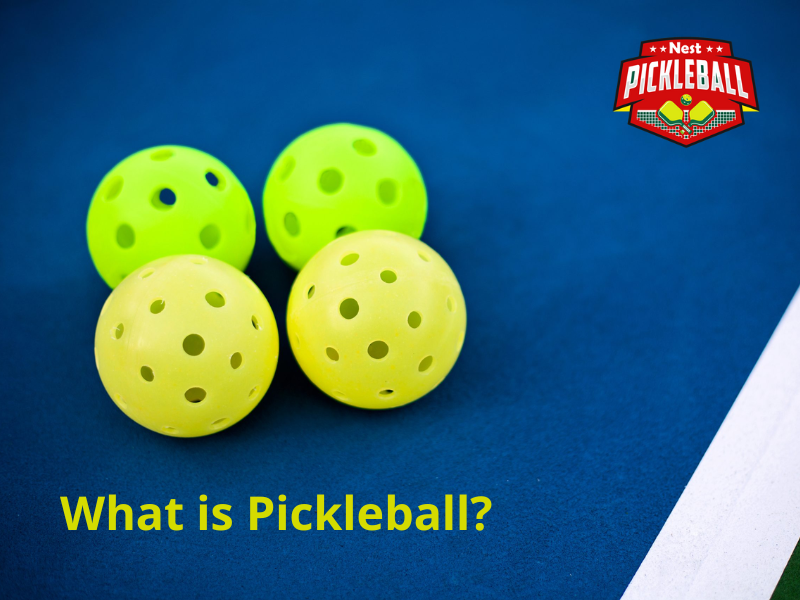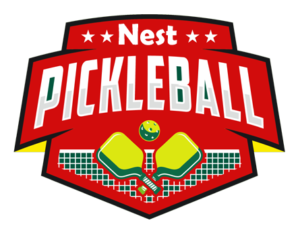For beginners, learning how to hold a pickleball paddle correctly is crucial for developing proper technique and control in the game.
But what are the best ways to hold your pickleball paddle?
The most common grip is the Continental Grip, also known as the “shake hands” grip. Imagine you are shaking hands with the paddle; place your hand on the paddle handle so that the “V” created by your thumb and index finger points towards your shoulder. It allows for ease of movement and is versatile for both forehand and backhand shots. Ensure your grip is firm yet relaxed to prevent fatigue and allow for a full range of motion.
Moreover, practicing to hold the paddle grip will lay the foundation for more advanced strokes as you progress in your pickleball journey.
We’re going through some of the tips that might help you grip and hold your paddle.
Step-By-Step Guide to Hold a Pickleball Paddle
Holding a pickleball paddle properly is essential for control and power during the game.
Here’s a step-by-step guide on how to hold a pickleball paddle:
Step 1- Start with a Neutral Grip
Hold the pickleball paddle in your dominant hand (right hand for right-handed players, left hand for left-handed players).
Place the paddle handle in the center of your hand, with the face of the paddle pointing towards the net. Your hand should be relaxed, and your fingers should be slightly spread apart.

Step 2- Position Your Fingers
Wrap your fingers around the handle, keeping a relaxed grip. Your fingers should be extended and comfortable, not too tight. Think of your hand as if you were shaking someone’s hand.
The base knuckle of your index finger should be on the backside of the handle.
Step 3- V-Shaped Grip (Continental Grip)
For most players, the recommended grip is the V-shaped grip, also known as the Continental grip. To achieve this grip, align the V-shaped space between your thumb and index finger with the top edge of the paddle face.
Your thumb should be on the backside of the handle, while your index finger should be on the paddle face. This grip provides versatility for both forehand and backhand shots.

Step 4- Secure Your Grip
After achieving the V-shaped grip, ensure your grip is secure but not too tight. Your other fingers (middle, ring, and pinky) should wrap around the handle naturally, with a light and relaxed touch.
Step 5- Check Your Wrist Position
Keep your wrist relatively straight, neither bent excessively upward nor downward. A neutral wrist position will allow for better control and accuracy.
Step 6- Practice Your Swing
With your paddle grip in place, practice your swings to get a feel for how the paddle moves in your hand. Practice both forehand and backhand shots to ensure you can easily transition between them.
Step 7- Maintain a Relaxed Grip
Throughout the game, focus on maintaining a relaxed grip on the pickleball paddle. Gripping too tightly can lead to fatigue and reduced control.
Step 8- Adjust as Needed
Some players may prefer slight variations in their grip to suit their playing style or comfort. Feel free to make small adjustments, but always strive for a grip that provides control and power.
Popular Ways to Hold Pickleball Paddle
Some popular pickleball grip styles are the “V” grip, the “W” grip, and the “S” grip. The “V” grip is a traditional hand position that was used in volleyball. The “W” grip is similar to the “V” grip but with a wider base. The “S” grip is similar to the “W” grip but with a shorter base.
It is important to find a grip style that feels comfortable for you. Try out a few different styles and see which one feels best.

To make the game even more fun, add some grip adjustments to your arsenal!
Here are three pickleball grips you can try:
1. Traditional Grip
The traditional grip is when players hold the paddle with the middle and index fingers extended straight out.
2. Semi-traditional Grip
The semi-traditional grip is when players hold the paddle with the middle and ring fingers extended straight out.
3. Hybrid Grip
The hybrid grip is when players hold the paddle with both middle and ring fingers extended straight out.
Where to Hold the Paddle?
When you’re playing paddleball, there are a few key things you need to keep in mind. One of the most important is where to hold the paddle.
There are a few different places you can hold the paddle, and each offers its own benefits. Here are four of the most common places to hold the paddle:
1) In your hand: This is the default position, and it’s the simplest and easiest way to play. Just hold it in your hand like a baseball bat.
2) Above your head: When you’re playing against someone else, it can be helpful to hold the paddle above your head so that they have to hit it over your head. This gives you more time to react and block their shots.
3) At shoulder level: This is a good position for when you’re playing by yourself. It gives you more control over the ball and makes it harder for your opponent to hit it out of bounds.
4) Behind your back: This is a good position for when you’re playing against another team. It keeps the other team from easily hitting the ball past you and makes it easier for you to block their shots.
Weak, Neutral, Or Strong Pickleball Grip Paddle
When it comes to picking up a paddle and hitting the ball, there are a few things you can do to make the game easier or more fun for yourself. One of the most important things you can do is find the right grip for you.
With so many different paddles on the market, it can be hard to decide which one is best for your game. Here are three types of grip that you can use in pickleball: weak, neutral, and strong.
Weak Grip
A weak grip is the easiest grip to learn and is best for beginners. You should use this grip if you have small hands or if you are not strong enough to use a stronger grip. To use a weak grip, hold the paddle close to your hand with your thumb and the first two fingers wrapped around the handle. You should also place your palm on top of the ball.
Neutral Grip
A neutral grip is good for intermediate players who want an easy game but don’t want to sacrifice strength. To use a neutral grip, hold the paddle with your thumb on top of the handle and your three other fingers spread evenly around it. You should also place your palm down on top of the ball.
Strong Grip
This grip is best used for offensive play because it gives players more control over their shots. It’s also more agile than the other two grips, making it easier to hit fastballs.
How to Hold a Pickleball Paddle for a Backhand?
The most common form of the “backhand” is to have your elbow bent, so that when you extend your hand backward you’re striking with the outside edge of your palm, in much the same way a baseball bat would strike. That’s what the wrist and forearm must do to direct it all properly.
As far as holding the paddle, there are two main techniques: The “finger–tip method,” where you hold the paddle (usually on top) with your fingers, not any part of your palm/palm side of the hand. This technique allows for a more powerful smash using wrist snaps and power generated from rotation and momentum.
The “thumb-tip method,” where you hold the paddle upside down (on top), with an index finger on top and thumb underneath, as if it were a normal pickleball paddle. This offers very similar advantages to that of ‘finger tip’ but can be extremely difficult to master because they tend to use much less force than ‘fingertip.’
You don’t need many bad habits or techniques when picking up a pair of tennis rackets; however, for this game, I recommend that you practice both grips until it becomes second nature.
More FAQs
When should one have a Weak Grip?
A weak grip can lead to many problems. It can be difficult to hold a pencil correctly, and it can be hard to open a jar or screwdriver. A weak grip can also cause hand fatigue. If you have a weak grip, you may want to try some exercises to improve your grip strength.
Why is Neutral Grip preferable?
Most people believe that a stronger grip is better when it comes to lifting weights. However, this assumption is wrong. A neutral grip, which is when the hands are placed evenly on the bar, gives you the most efficient and effective lift.
This is because your hands are not fighting against each other for leverage, and they’re also able to move more freely. Plus, a neutral grip allows you to use more muscle groups to work together in unison.
Does a Strong Pickleball Grip mean more strength behind the stroke?
A strong pickleball grip can mean increased power behind the stroke, but there are other factors to consider when it comes to hand strength.
“The biggest misconception about hand strength is that it’s just about how strong your grip is,” says coach and Strength and Conditioning Specialist, Kari Moran. “While a strong grip does play a role in hand strength, it’s not the only thing that matters. The size and shape of your hands, the length of your fingers, the placement of your thumb, and the overall proportion of your hand all play a role in determining how powerful you can be with your pickleball stroke.”
So while having a strong grip definitely helps you generate more power behind the stroke, make sure you also have strong muscles throughout your arm and hand to make the most of that power.
What grip do you use in pickleball?
I use a slight overhand grip as in a right-handed baseball grip. The pickleball balls are smaller than regular tennis balls, and the difficulty with this is that the normal overhand grip does not fit half the time.
How tight should you hold a pickleball paddle?
This is a hard question to answer because it depends on your strength and reach. If you are strong enough to wield the paddle comfortably, but not too strong that you can’t keep up with the serve in pickleball (the official name of the game), then you should be able to hold that paddle as tight as necessary during a match.
Final words
If you’re looking for a fun and challenging activity to do with friends, look no further than pickleball. This game is played by two teams of players, who use a paddle to hit a ball back and forth across the playing court.
If you’re new to the sport or just want to improve your skills, be sure to check out our guide on how to hold a pickleball paddle. From there, it should be easy enough to find an open court and get started!

